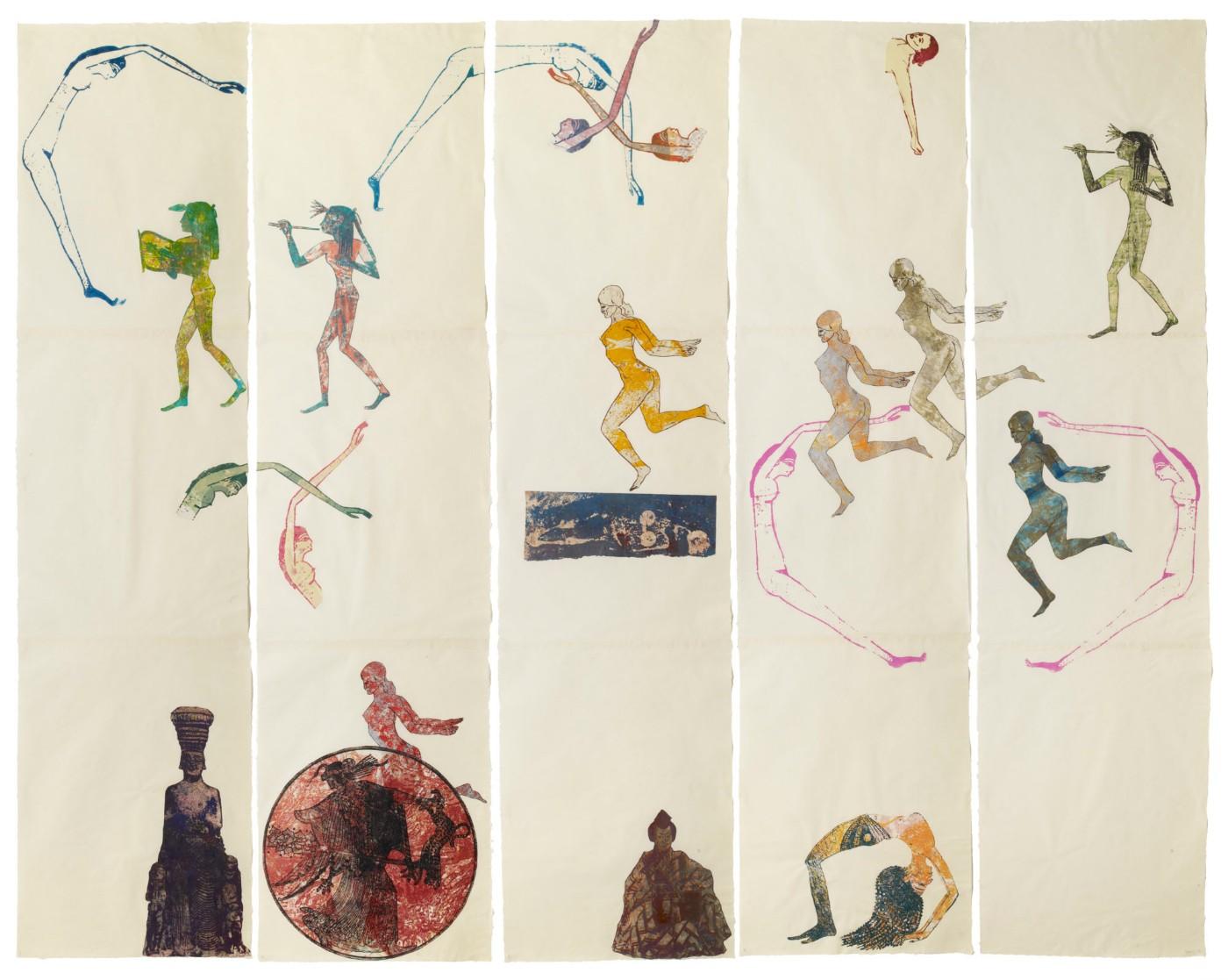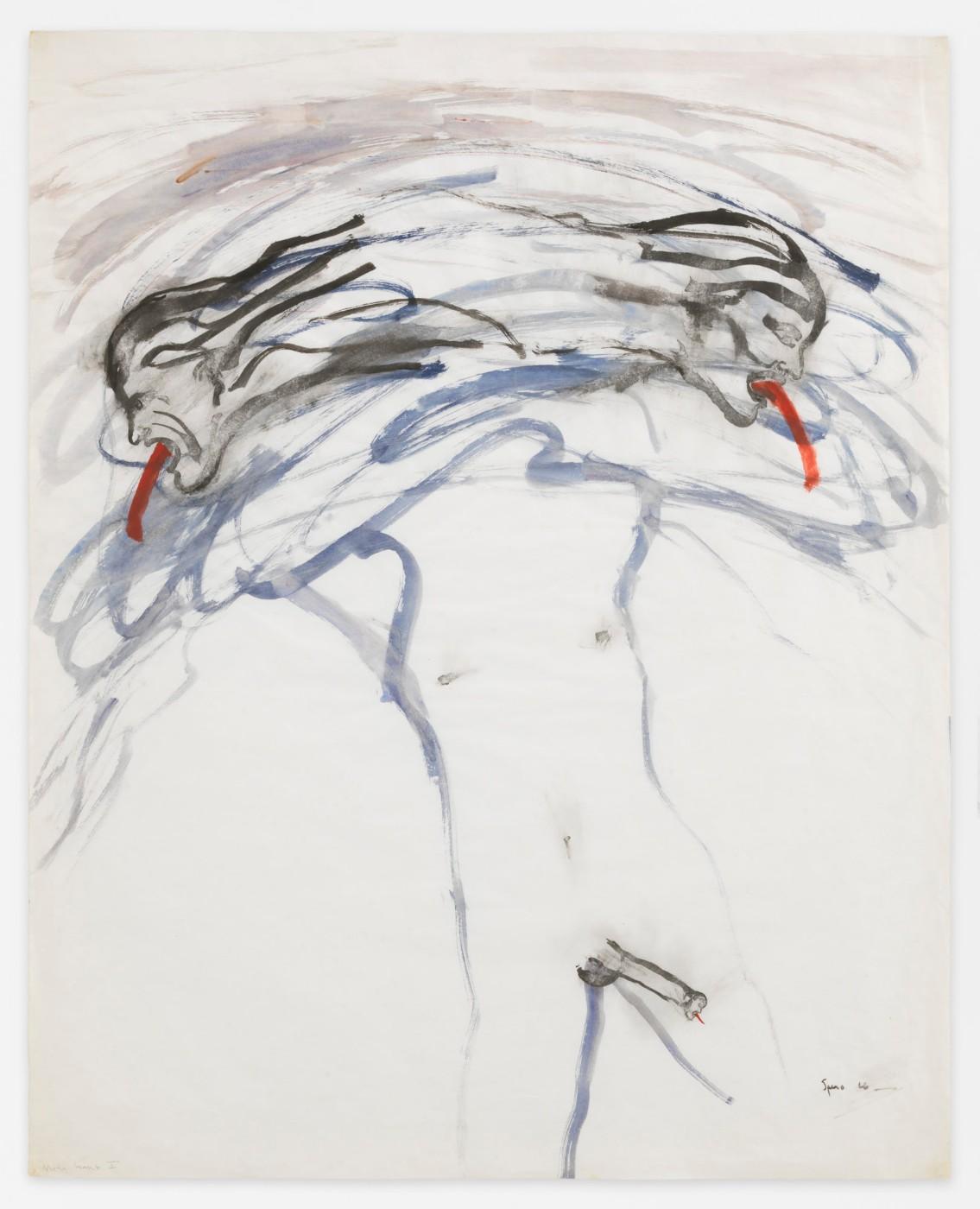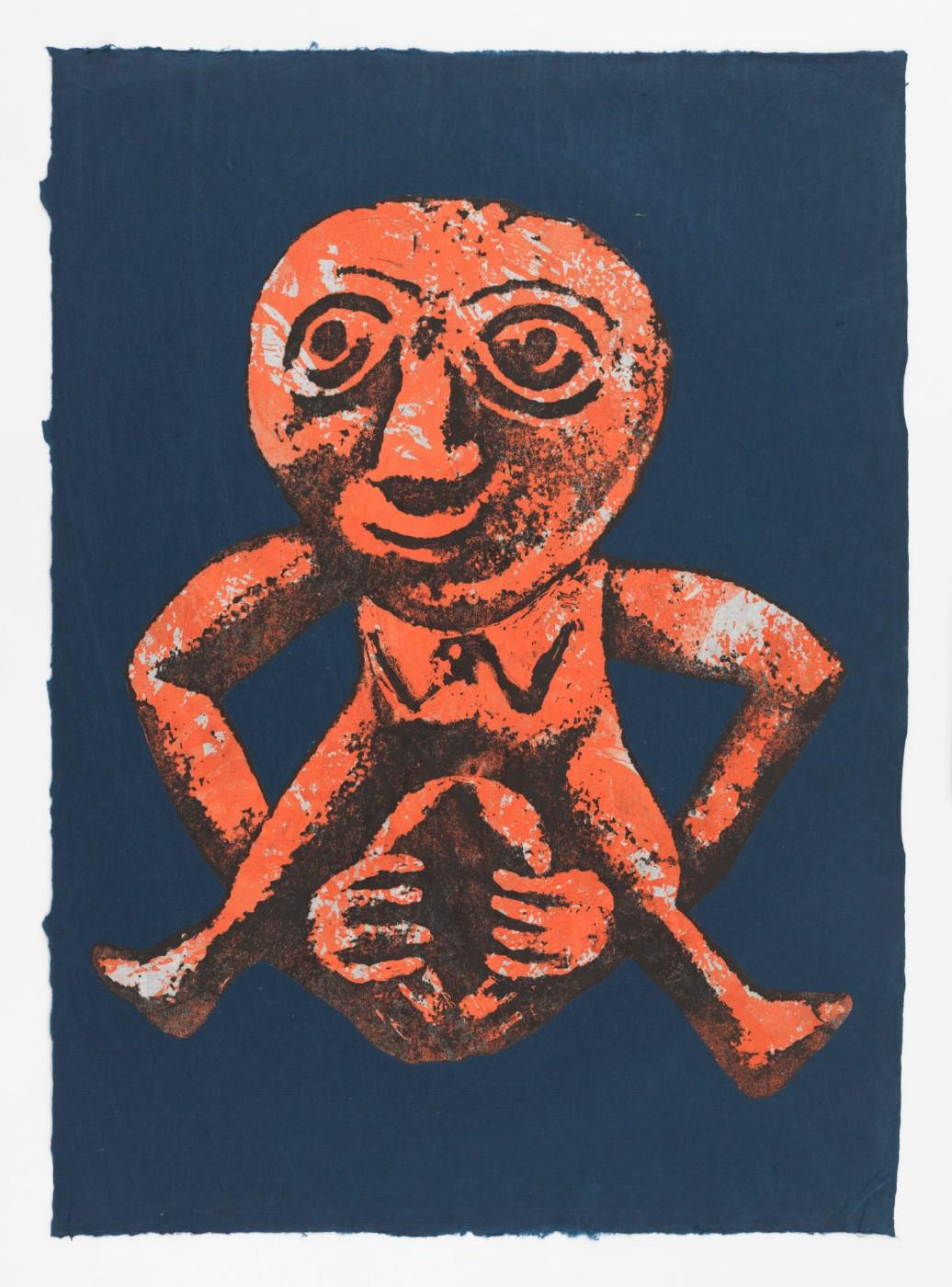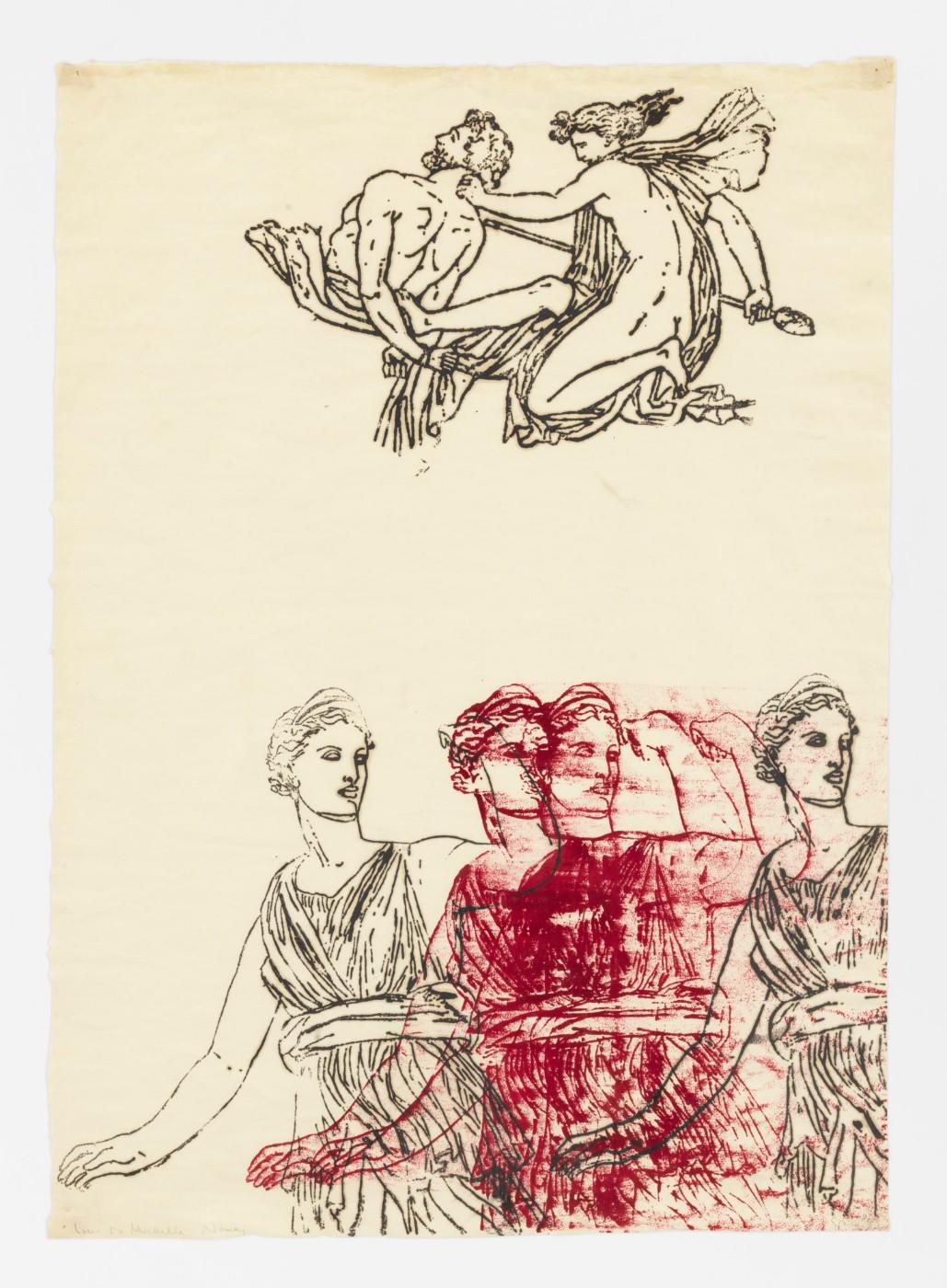Nancy Spero: Paper Mirror surveys the full scope of Spero’s career, beginning with her early figurative paintings. Provoked by the atrocities of the Vietnam War, Spero began to incorporate activism into her work in the 1960s, a period during which she concluded that painting had become “too conventional, too establishment.” Abandoning canvas for paper, Spero’s The War Series (1966-1969) conveyed her outrage in depictions of sexualized bombs that personified the gendered brutality of the conflict. From 1966 onward Spero worked primarily on paper, and women’s history gradually but emphatically became her central subject. In scroll-like compositions from the 1970s, Spero placed fragments of text alongside female figures derived from a vast range of historical sources, probing the gendered relationship between language and power. Collaging together images from mythology, folklore, art history, literature, and media―and presenting them in a range of formats from scrolls to friezes to room-sized installations―Spero described her works as “ephemeral monuments” to the full range of women’s experience.
The exhibition features numerous works from the 1980s, 1990s, and 2000s, including the monumental work Notes in Time on Women (1979-81), a 200-foot-long frieze from the collection of The Museum of Modern Art, on view for the first time in more than a decade. Also featured is the large-scale installation Maypole: Take No Prisoners (2007), the last major work the artist completed before her death, originally realized for the Venice Biennale. Installed in MoMA PS1’s first-floor Duplex gallery, the work consists of a twenty-foot vertical steel pole with over 200 images of decapitated heads that hang from ribbons and metal chains. Created during the Iraq War but derived from Spero’s earlier drawings that responded to the Vietnam War, Maypole provokes inquiry into the cyclical nature of history, war, and its victims.




























